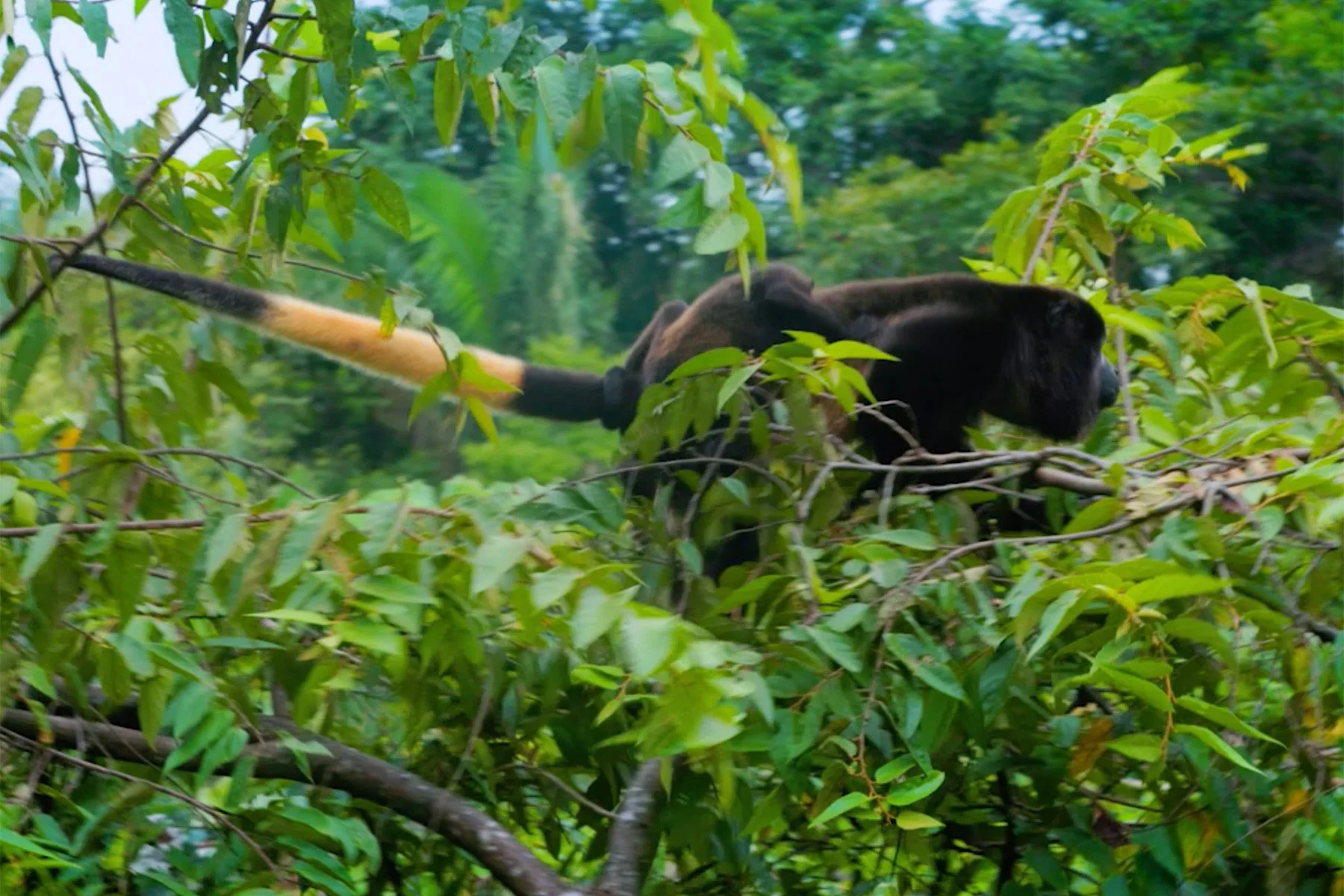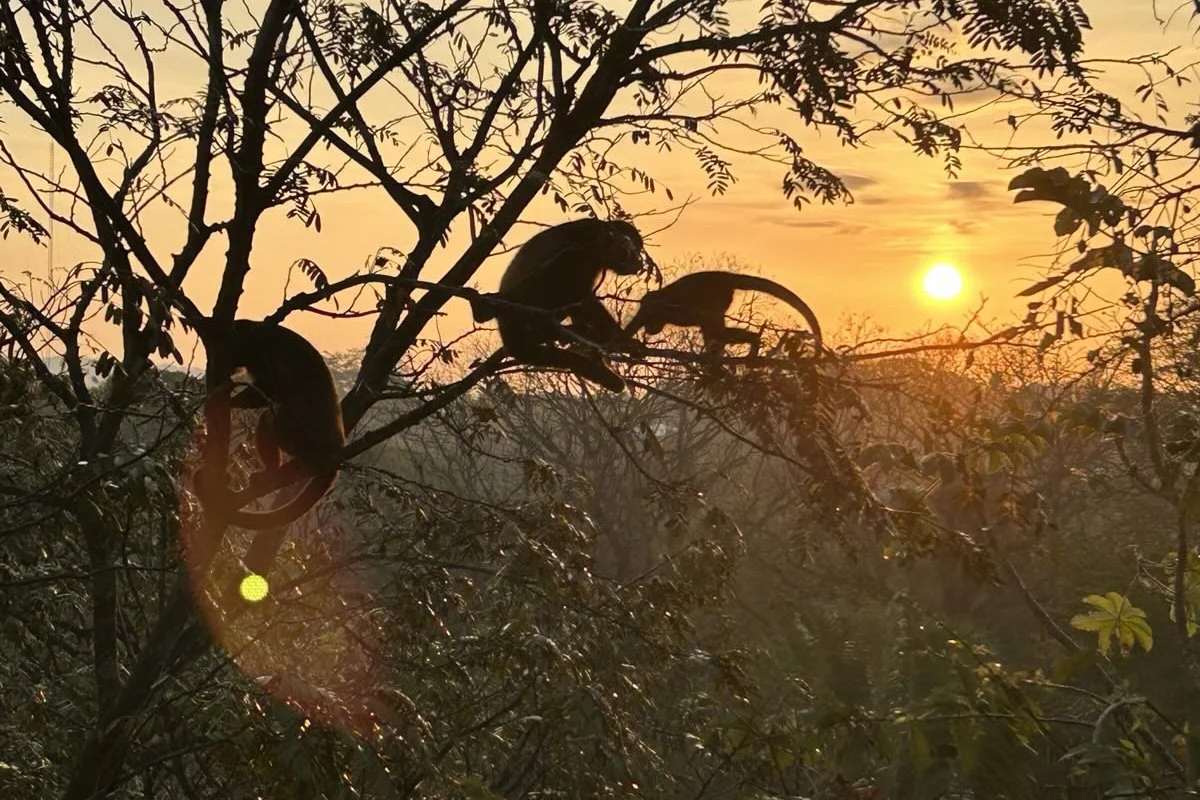Get to Know Our Local Howlers
Leaf Eaters and Energy Savers
Howlers are vegetarians. Their diet is mostly made up of leaves, with some flowers, nectar, and fruit as well, when they can find it. They use their strong prehensile tails to hang from the top tree branches to reach the newest leaves—those tend to have more protein and fewer toxins. Leaves don’t give them a lot of energy, so they have to be careful about how they spend it. (This is why they nap….a lot.)
Because Howlers are both territorial and need to conserve their energy, howling is an efficient way to claim territory and avoid conflict with other groups. It’s a lot easier and less exertion than getting into a fight to defend space or resources.
If they feel threatened, though—especially if you’re standing under them—they might throw things your way. Just to keep in mind. 💩
Panda the Alpha
Living at canopy level means we often get a close look at the monkeys that pass through. We’ve identified two separate troops so far, each with its own alpha male.
One of those males stands out. He has a pale yellow tail, which is unusual. Our kids call him “Panda.” This coloring is the result of a genetic anomaly called leucism. It can be linked to environmental stress or inbreeding—something that happens when monkey populations get isolated. It’s one of the reasons protecting larger, connected areas of forest is so important for long-term species health.
How Monkey Groups Work
Most howler troops have between 2 and 18 members, though in bigger forests they can be much larger. Panda’s group here has about 12 individuals. Before reaching adulthood, young males and females are usually separated from their group and spend time on their own before finding a new troop to join.
Groups avoid each other as much as possible. That’s part of why the howling is so loud—it helps keep everyone spread out.
The Other Monkeys of Costa Rica
There are four monkey species in Costa Rica. Here in Nosara, howlers are the most common, but here’s how the others compare:
Spider Monkeys eat mostly fruit. They travel a lot to find it and need large patches of forest to survive. Unlike the others, they don’t have opposable thumbs—this helps them move freely without getting tangled in branches.
Capuchins (white-faced monkeys) are omnivores. They use tools, have great dexterity, and will eat just about anything—including birds, bats, and sometimes even baby howlers. They’re known for being extremely bold and curious.
Squirrel Monkeys are small and quick. They eat lots of insects and move constantly in search of food. Like Capuchins, their hands look very much like ours.
The only place in Costa Rica where you’ll find all four species together is in the southern part of the country around the Osa Peninsula.
A Daily Connection with Nature
Living at El Bosque means sharing space with wildlife, and monkeys are one of the most exciting parts of that. Watching them rest, feed, and move through the trees gives us a chance to feel connected to the forest around us. We hope this helps you appreciate the howlers a bit more next time you hear their calls echoing across the landscape.



